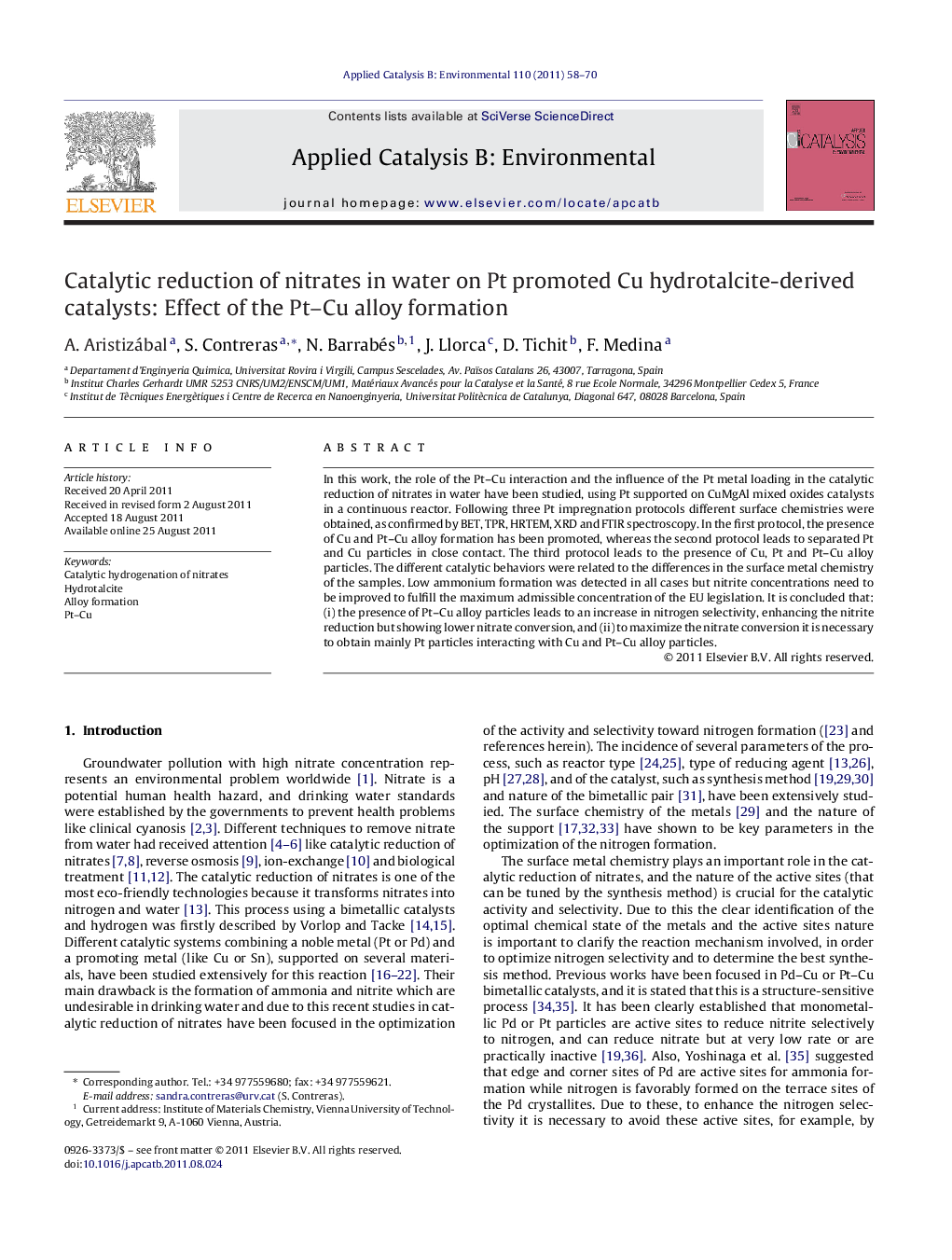| کد مقاله | کد نشریه | سال انتشار | مقاله انگلیسی | نسخه تمام متن |
|---|---|---|---|---|
| 46574 | 46442 | 2011 | 13 صفحه PDF | دانلود رایگان |

In this work, the role of the Pt–Cu interaction and the influence of the Pt metal loading in the catalytic reduction of nitrates in water have been studied, using Pt supported on CuMgAl mixed oxides catalysts in a continuous reactor. Following three Pt impregnation protocols different surface chemistries were obtained, as confirmed by BET, TPR, HRTEM, XRD and FTIR spectroscopy. In the first protocol, the presence of Cu and Pt–Cu alloy formation has been promoted, whereas the second protocol leads to separated Pt and Cu particles in close contact. The third protocol leads to the presence of Cu, Pt and Pt–Cu alloy particles. The different catalytic behaviors were related to the differences in the surface metal chemistry of the samples. Low ammonium formation was detected in all cases but nitrite concentrations need to be improved to fulfill the maximum admissible concentration of the EU legislation. It is concluded that: (i) the presence of Pt–Cu alloy particles leads to an increase in nitrogen selectivity, enhancing the nitrite reduction but showing lower nitrate conversion, and (ii) to maximize the nitrate conversion it is necessary to obtain mainly Pt particles interacting with Cu and Pt–Cu alloy particles.
. Proposed scheme of the Pt–Cu metallic states in the catalytic reduction of nitrates in water.Figure optionsDownload as PowerPoint slideHighlights
► Pt/CuMgAl calcined HT are tested for the catalytic reduction of nitrates in water.
► Synthesis method influences catalytic activity due to different Pt–Cu interactions.
► Double impregnation method maximizes the nitrate conversion.
► Pt–Cu alloy formation favors nitrogen selectivity and nitrite reduction.
► Pt–Cu alloy formation affects negatively the nitrate conversion.
Journal: Applied Catalysis B: Environmental - Volume 110, 2 November 2011, Pages 58–70